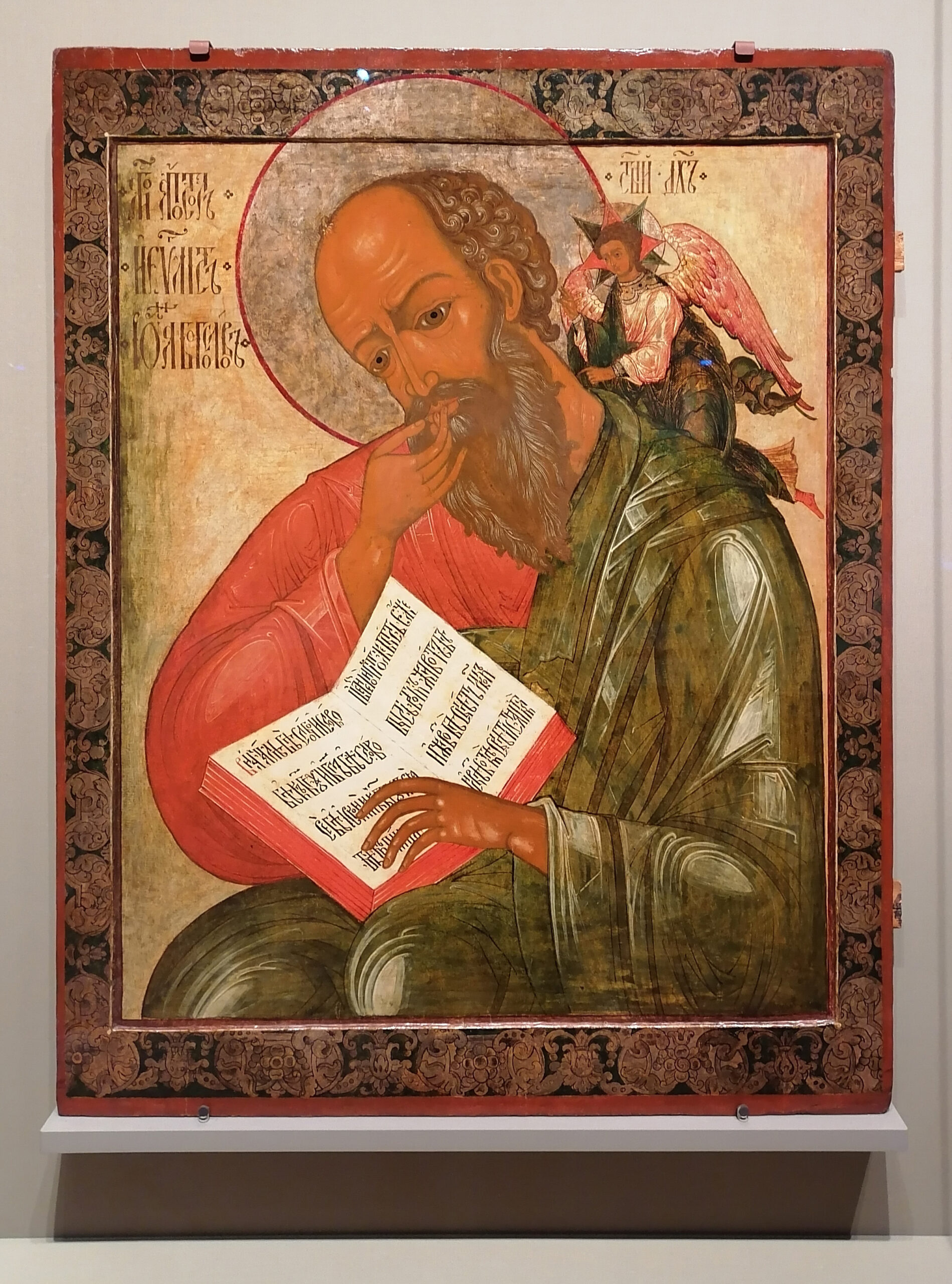Christ is Risen from the dead, by death trampling down upon death, and to those in the tombs He has granted life.
~Translation of the Greek Orthodox Archdiocese of America
—
And when the Sabbath was past, Mary Magdalene, and Mary the mother of James, and Salome, bought spices, so that they might go and anoint him. And very early on the first day of the week they went to the tomb when the sun had risen. And they were saying to one another, “Who will roll away the stone for us from the door of the tomb?” And looking up, they saw that the stone was rolled back—it was very large. And entering the tomb, they saw a young man sitting on the right side, dressed in a white robe; and they were amazed. And he said to them, “Do not be amazed; you seek Jesus of Nazareth, who was crucified. He has risen, He is not here; see the place where they laid Him. But go, tell His disciples and Peter that He is going before you to Galilee; there you will see Him, as He told you.” And they went out and fled from the tomb; for trembling and astonishment had come upon them; and they said nothing to anyone, for they were afraid.
Mark 16:1-8
Christ is Risen!
At the very beginning of this series, we discussed the fact that most hymns in the Orthodox Church are hymns that teach. There are hymns that praise God, and there are hymns that supplicate Him (ask for things). However, the majority of hymns in our church, especially during Holy Week, are hymns that teach. The hymn “Christ is Risen” (“Christos Anesti”) is probably the most well-known hymn in the Orthodox world, and it falls into this category.
This hymn, which we sing with great joy and great gusto is twenty-two words long in English, and four of the words are “dead,” “death,” “death” and “tombs.” Doesn’t sound like much joy there! Yet, if one understands the words of this hymn, they bring great joy. The most joyful notion of this hymn is that the Resurrection of Christ paves the way to life for those in the tombs. This means that all of our friends and relatives who have fallen asleep in the Lord are not dead (in the sense that they are estranged from God and cease to be entities) but are alive. Their souls are with the Lord, for all time. All of us will one day lie in the tombs. This is a consequence of the Fall. Rather than our lives being a slow march to lifelessness, it is a journey to the Lord, to eternal life in His kingdom.
Let’s go back to a phrase in the last paragraph, “our friends and relatives who have fallen asleep in the Lord.” Every night, we fall asleep in a bed. We lay our heads down on a pillow, we relax, we let sleep envelope us. To fall asleep in the Lord means that at the end of life, we lay our heads down, we relax, and we let the Lord envelope us. It doesn’t take faith to fall asleep on a bed. We know that our bodies will wake up to greet another day. We do this process over and over again thousands of times in life. To fall asleep in the Lord, in death, happens one time, and it takes a lifetime of building up faith, so that when the moment comes, we “fall asleep” (die) with confidence, that “life” (eternal life) awaits all those who lie in the tombs with faith in God.
“Christ is Risen” is sung dozens of times on Pascha and hundreds of times during the Paschal season. It is the most often sung hymn of the liturgical year. That’s because even thousands of years ago, people got songs stuck in their head. This hymn is sung often so that it will be stuck in our heads. Not only that, as we pointed out early in this study, the hymns were teaching people in centuries past because people couldn’t read. They learned from repetition and from singing hymns that tell stories over and over again. Virtually everyone who is Orthodox knows the words to “Christ is Risen.” And that’s good, because this hymn teaches us the most important lesson, that Christ is risen from the dead, by His death He trampled down the power of death, and to those in the tombs, He has granted life. If this is the only knowledge we have about Christ, if we cling to that, if we understand that, and if we live in this joyful expectation, then this is really all the knowledge that we need.
It is interesting to note that during the forty days of the Paschal season, we greet each other with the words “Christ is risen!” “Truly He is risen!” We don’t say “Christ rose!” “Truly He rose!” That is because we don’t highlight and celebrate the Resurrection as an historical event or even a triumph for Christ. We celebrate it as a continuous reality, and a triumph for all of us. Thus, we proclaim this in the present continuous tense, that Christ is Risen, and that those who believe in Christ will have the opportunity to be “risen” as well. Christ is Risen, and that brings hope, and purpose and joy to all of us.
Let us arise in the early dawn, and instead of myrrh, offer a hymn to the Master; and we shall see Christ, the Sun of Righteousness dawning life to all. (Fifth Ode, Paschal Canon, Trans. by Fr. George Papadeas)
Christ is Risen! Truly He is Risen!

